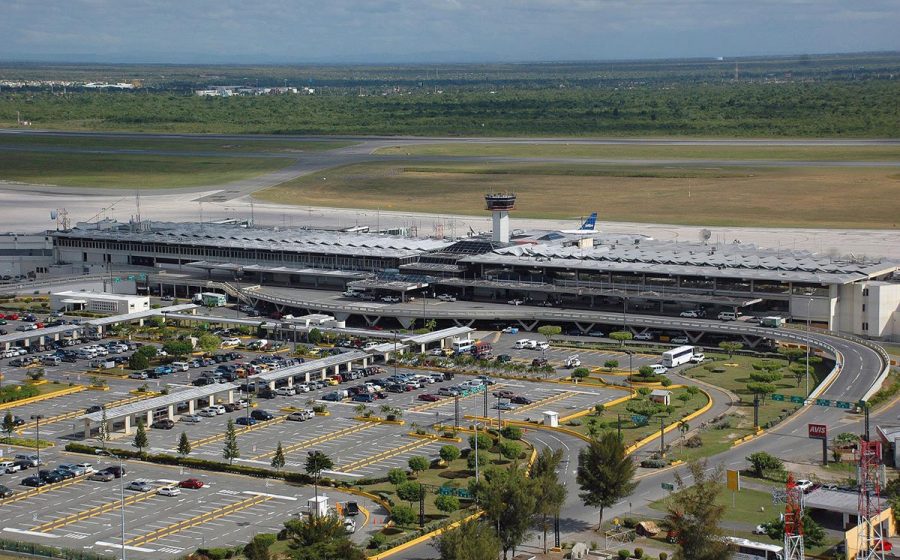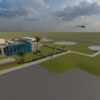-
Table of Contents
“Gateway to Paradise: Discover the Dominican Republic’s Airports”
Navigating International And Domestic Flights In The Dominican Republic
The Dominican Republic, a Caribbean nation known for its stunning beaches and vibrant culture, is served by a network of airports that facilitate both international and domestic travel. These airports are strategically located to cater to the diverse needs of travelers, whether they are visiting for leisure, business, or other purposes. Understanding the layout and services of these airports can significantly enhance the travel experience.
The primary gateway for international travelers is Las Américas International Airport (SDQ), situated near the capital city, Santo Domingo. As the busiest airport in the country, it handles a substantial volume of international flights, connecting the Dominican Republic with major cities across the Americas and Europe. Las Américas is equipped with modern facilities, including duty-free shops, restaurants, and car rental services, ensuring that passengers have access to essential amenities. The airport’s proximity to Santo Domingo makes it a convenient entry point for those looking to explore the historical and cultural attractions of the capital.
Transitioning to the eastern part of the country, Punta Cana International Airport (PUJ) stands out as a crucial hub for tourists. Located in one of the most popular resort areas, this airport is the second busiest in the Dominican Republic. It is renowned for its open-air terminals that reflect the tropical ambiance of the region. Punta Cana International Airport offers a wide range of international flights, primarily catering to tourists from North America and Europe. The airport’s design and services are tailored to provide a seamless experience for vacationers heading to the nearby luxury resorts and pristine beaches.
Further north, Gregorio Luperón International Airport (POP) serves the city of Puerto Plata and its surrounding areas. This airport is vital for travelers visiting the northern coast, known for its beautiful beaches and vibrant local culture. While smaller than Las Américas and Punta Cana, Gregorio Luperón International Airport efficiently handles both international and domestic flights. It provides essential services such as dining options and transportation facilities, ensuring that passengers can easily reach their destinations.
In the southern region, La Romana International Airport (LRM) caters to tourists visiting the luxurious Casa de Campo resort and the surrounding areas. Although it is one of the smaller international airports in the country, it offers a selection of flights from North America and Europe. The airport’s intimate size allows for quick and efficient processing, making it an attractive option for travelers seeking a more relaxed arrival experience.
For those traveling within the Dominican Republic, domestic flights are primarily operated through smaller airports such as Cibao International Airport (STI) in Santiago. This airport serves as a vital link for domestic travel, connecting the central region with other parts of the country. Cibao International Airport also offers a limited number of international flights, primarily to the United States, catering to the Dominican diaspora.
In conclusion, the Dominican Republic’s network of airports plays a crucial role in facilitating both international and domestic travel. From the bustling Las Américas International Airport to the tourist-friendly Punta Cana International Airport, each facility is designed to meet the needs of different types of travelers. By understanding the unique characteristics and services of these airports, visitors can better navigate their journeys and fully enjoy the diverse experiences that the Dominican Republic has to offer.
Facilities And Services At Dominican Republic Airports
The Dominican Republic, a vibrant Caribbean nation known for its stunning beaches and rich cultural heritage, is served by several airports that facilitate the influx of tourists and business travelers alike. Each airport in the Dominican Republic is equipped with a range of facilities and services designed to enhance the travel experience, ensuring that passengers have a seamless journey from arrival to departure. As we explore these airports, it becomes evident that they are not only gateways to the country’s diverse attractions but also reflections of its commitment to hospitality and efficiency.
Punta Cana International Airport, the busiest in the country, is a prime example of modern airport infrastructure. It boasts a variety of amenities that cater to the needs of international travelers. The airport features numerous dining options, from fast-food outlets to sit-down restaurants offering local and international cuisine. Additionally, duty-free shops provide an opportunity for passengers to purchase a wide array of goods, including luxury items and local crafts. For those seeking relaxation, the airport offers VIP lounges where travelers can unwind in comfort before their flights. Furthermore, the airport is equipped with free Wi-Fi, ensuring that passengers can stay connected while waiting for their flights.
Similarly, Las Américas International Airport, located near the capital city of Santo Domingo, offers a comprehensive range of services. This airport serves as a crucial hub for both domestic and international flights. It provides essential facilities such as currency exchange counters and ATMs, which are conveniently located throughout the terminal. For travelers requiring assistance, information desks staffed by multilingual personnel are available to provide guidance and support. The airport also prioritizes accessibility, with features such as ramps and elevators to accommodate passengers with reduced mobility.
Moving to the northern part of the country, Gregorio Luperón International Airport in Puerto Plata caters to tourists visiting the region’s picturesque beaches and resorts. This airport, while smaller than its counterparts, still offers a selection of services aimed at ensuring passenger comfort. Dining options and retail outlets are available, allowing travelers to enjoy a meal or shop for souvenirs. The airport also provides car rental services, facilitating easy access to nearby attractions. Moreover, the presence of medical facilities ensures that any health-related concerns can be promptly addressed.
In the eastern region, La Romana International Airport serves as a gateway to the luxurious resorts and golf courses that dot the area. This airport, though more modest in size, is equipped with essential amenities such as dining facilities and duty-free shopping. The airport’s efficient layout ensures that passengers can navigate through the terminal with ease, minimizing stress and enhancing the overall travel experience.
Finally, Cibao International Airport in Santiago is a vital link for travelers heading to the central part of the Dominican Republic. This airport offers a range of services, including dining options and retail stores. It also provides facilities for business travelers, such as meeting rooms and business centers, allowing them to conduct work efficiently while on the move.
In conclusion, the airports of the Dominican Republic are well-equipped to meet the diverse needs of travelers. From modern amenities and dining options to accessibility features and business facilities, these airports strive to provide a pleasant and efficient travel experience. As gateways to the country’s many attractions, they play a crucial role in welcoming visitors and ensuring that their journey begins and ends on a positive note.
Overview Of Major Airports In The Dominican Republic
The Dominican Republic, a Caribbean nation known for its stunning beaches and vibrant culture, is served by several major airports that facilitate both international and domestic travel. These airports are strategically located to cater to the diverse needs of tourists and locals alike, ensuring efficient connectivity across the island. Among the most prominent is Punta Cana International Airport (PUJ), which stands as the busiest airport in the country. Situated on the eastern coast, it serves as a gateway for millions of tourists drawn to the region’s luxurious resorts and pristine beaches. The airport boasts modern facilities, including multiple terminals designed to handle a high volume of passengers, and offers a wide range of international flights, primarily from North America and Europe.
Transitioning to the capital, Las Américas International Airport (SDQ) in Santo Domingo is another key hub. Located just outside the city, it serves as the primary airport for the capital region and is the second busiest in the country. Las Américas is crucial for both business and leisure travelers, providing numerous connections to major cities in the Americas and Europe. The airport is equipped with comprehensive passenger services, including dining and shopping options, ensuring a comfortable experience for travelers.
Further north, Gregorio Luperón International Airport (POP) in Puerto Plata caters to the northern coast’s tourism industry. This airport is essential for visitors heading to the popular beach destinations of Puerto Plata, Sosúa, and Cabarete. Although smaller than Punta Cana and Las Américas, Gregorio Luperón International Airport efficiently handles a significant number of charter flights, particularly during the peak tourist season. Its facilities are designed to accommodate the needs of international travelers, offering a range of services to enhance passenger convenience.
In the southeastern part of the country, La Romana International Airport (LRM) serves the La Romana and Casa de Campo areas, known for their upscale resorts and golf courses. This airport primarily handles charter flights and private jets, catering to a more exclusive clientele. Despite its smaller size, La Romana International Airport provides essential services and amenities, ensuring a seamless travel experience for its passengers.
Additionally, Cibao International Airport (STI) in Santiago de los Caballeros plays a vital role in connecting the central region of the Dominican Republic with the rest of the world. As the third busiest airport in the country, it serves as a crucial link for the Dominican diaspora, particularly those residing in the United States. Cibao International Airport offers a range of international flights and is equipped with modern facilities to accommodate the growing number of travelers.
Moreover, smaller airports such as El Catey International Airport (AZS) in Samaná and María Montez International Airport (BRX) in Barahona provide important regional connections. El Catey serves the Samaná Peninsula, a region known for its natural beauty and ecotourism opportunities, while María Montez supports the southwestern part of the country, facilitating access to its less-explored attractions.
In conclusion, the Dominican Republic’s network of airports plays a crucial role in supporting the nation’s tourism-driven economy. Each airport, from the bustling hubs of Punta Cana and Santo Domingo to the regional gateways of Samaná and Barahona, contributes to the seamless movement of people and goods across the island. This well-developed infrastructure not only enhances the travel experience but also underscores the Dominican Republic’s position as a premier destination in the Caribbean.








